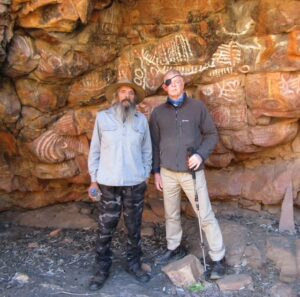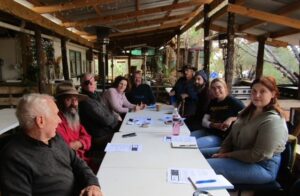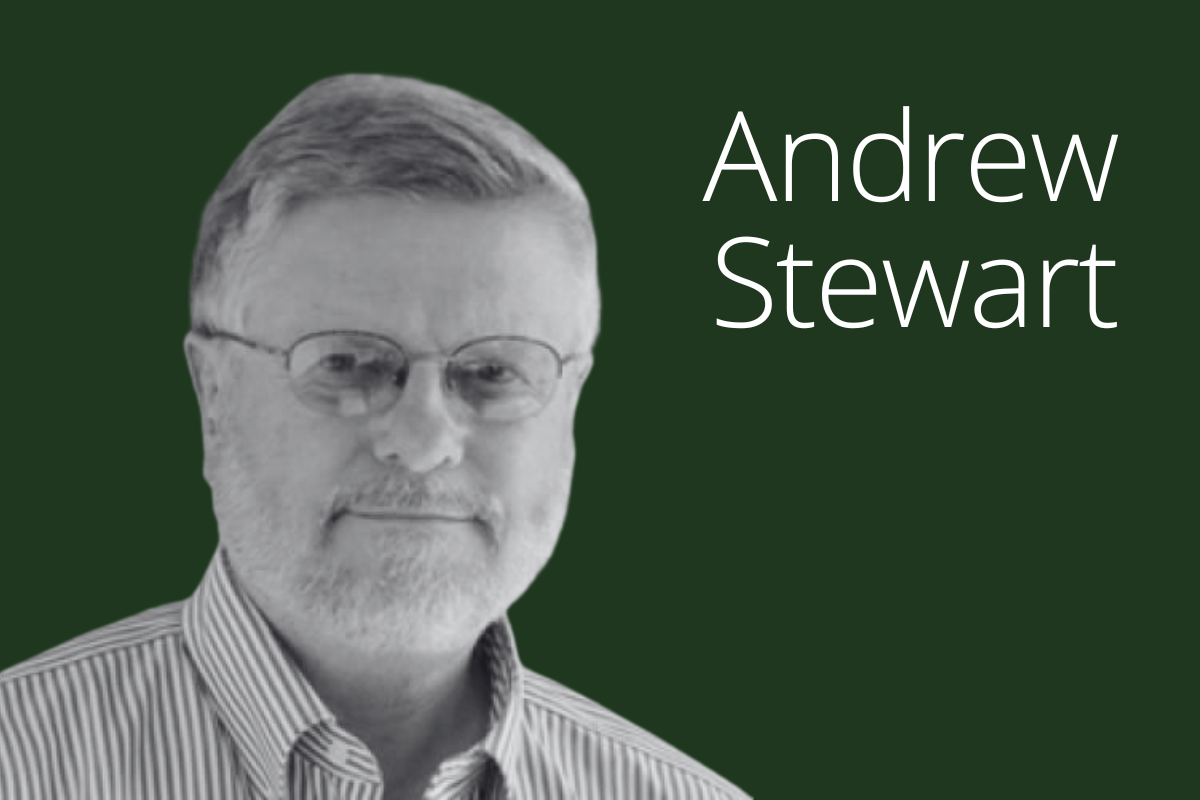Emeritus Professor Michael Alexander Smith made pioneering contributions to our understandings of Australia’s human and environmental histories. He was a tenacious, collaborative, strategic, intelligent and deeply learned researcher. He produced more than 110 refereed journal articles, six edited books and monographs, a major report published on CD, three single authored books and a range of published datasets and popular works. Emeritus Professor Smith’s research was recognised by a plethora of prestigious awards, including the Rhys Jones Medal for Outstanding Contribution to Australian Archaeology from the Australian Archaeological Association in 2006, the Verco Medal from the Royal Society of South Australia in 2010, an Order of Australia (AM) in 2013. An extract from the citation for the Rhys Jones Medal reads:
Mike’s attention to the ‘big questions’ facing archaeology, his ability to turn ideas into research projects, his continued work in the field, his enviable publication record, his elegant prose, his generosity to other researchers, and his passion for the discipline of archaeology make him an ideal recipient of the Rhys Jones Medal.
Emeritus Professor Smith’s ground-breaking research begun in the 1980s at a time when Australian deserts were largely believed to be inhospitable landscapes that were uninhabited until 12,000 years ago. His excavations at Puritjarra rockshelter in Central Australia between 1986 and 1990 tripled the known timing of Indigenous occupation in the region. This research ended a decade of scientific speculation on occupation of the arid interior of Australia and refuted the hypothesis that the arid interior was first settled during Holocene climatic amelioration around 12-10 kyr. It was, and still is, widely cited, and reported on a radiocarbon-dated sequence from a 22 kyr (now known to be 36kyr) site, which is one of the key archaeological sites for the Australian desert. Other Central Australian research undertaken by Emeritus Professor Smith initiated systematic interest in the chronology, technology and economics of seed-grinding as a key desert adaptation (Smith 1987, Nature 328:710-11) and shaped current thought about the harvesting and processing of native cereals, including the antiquity and development of this technology and the economies that it supported.

A perusal of Mike Smith’s research collaborations is like reading a ‘Who’s Who’ of Australian archaeology. With colleagues, he contributed to determining the age of the earliest settlements of Australia, the nature of these late Pleistocene societies and the timing of extinction of Australian megafauna. His article on the changing provenance of red ochre at Puritjarra rock shelter, central Australia from the late Pleistocene to the present (Smith, Fankhauser and Jercher 1998, Proceedings of the Prehistoric Society 64:275-292) was a pioneering geochemical study that employed a highly original approach to characterising ochre geochemistry by combining mineralogy, stable isotopes, petrology, trace element and oxide analyses. This paper demonstrated changing sources of red ochre over time and changing cultural site catchments. At a time when luminescence techniques were increasingly deployed to date archaeological deposits in rock shelters he published several detailed comparisons of luminescence and radiocarbon chronologies, at Puritjarra (Smith, Prescott and Head 1997, Quaternary Science Reviews 16:3-5) and in a forensic review co-authored by Bert Roberts and Rhys Jones of Pleistoence-aged archaeological sites dated with multiple geochronological methods which demonstrated the importance of combining luminescence and radiocarbon techniques to develop a robust chronology when ages are close to the radiocarbon “barrier” (Roberts, Jones and Smith 1994, Antiquity 68:611-16). His concern with data being properly checked, synthesised and freely available produced in a highly useful dataset of 5,044 radiocarbon determinations from 1,748 archaeological sites across Australia in addition to a 478 non-radiocarbon ages (Williams, Ulm, Smith and Reid 2014, Internet Archaeology 36). With Andrée Rosenfeld he analysed how changes in the graphic vocabulary, style, and composition of rock paintings at Puritjarra related to changes in social geography (Rosenfeld and Smith 2002, Proceedings of the Prehistoric Society 68:103-124). He had close long-term collaborations with June Ross, with whom he published 15 papers, and Dick Kimber. His interest in the historiography of archaeology produced a co-authored article with Ross and Kimber which charts Robert (Bob) Edwards’ development from an antiquarian to a humanist perspective that appreciates ancient rock art sites as part of a living tradition (Smith, Ross and Kimber 2021, Historical Records of Australian Science 32(1):41-51).
The work in Central Australia undertaken by Emeritus Professor Smith is bookmarked by pioneering research: at one end, excavations at Puritjarra rockshelter that provided the first evidence of occupation of the central desert during the Pleistocene, ending a decade of scientific speculation about the timing of human settlement in the arid zone (Smith 1987 Nature 328(6132):710-71) and at the other, his book The Archaeology of Australia’s Deserts, an interdisciplinary synthesis of the Indigenous history of Australian deserts, published by Cambridge University Press in 2013. This archaeological, ethnographic and interdisciplinary exploration of the Aboriginal occupation of Australia’s deserts synthesizes the deep history of Australia’s deserts, charting the development of distinctive Aboriginal societies over 30 millennia. It was described as ‘a landmark work of Australian history’ (Tom Griffiths 2013, Inside Story 16/5/13, p1), ‘a masterwork on Australia’s inland’ (Nicholas Rothwell 2012, Weekend Australian, 10/11/12, p22), and as ‘a magnificent foundation for us to build on’ (Harry Allen 2013, Archaeology in Oceania 48(3):168). The Council for Humanities, Arts and Social Sciences shortlisted it for the Australia Prize in 2014 and in 2013 this book was recognised by the Australian Archaeological Association’s John Mulvaney Book Award, awarded for ‘books that cover both academic pursuits and public interest’.
The research that Mike Smith and other eminent scholars undertook on Australian deserts was placed into an international context through the National Museum of Australia exhibition Extremes: Survival in the Great Deserts of the Southern Hemisphere
(2004 -2005) and the edited volume Desert Peoples: Archaeological Perspectives (Veth, Smith and Hiscock 2005, Smithsonian Libraries) which examines key concepts vital to understanding human adaptation to marginal landscapes and the behavioural and belief systems that underpin them. For the first time, this volume brought together archaeological and anthropological studies from diverse deserts ranging from the sand dunes of Australia, the U.S. and Great Basin, to the deserts of the African continent and the coastal and high-altitude deserts of South America.
While he is justifiably lauded for his work in the Australian deserts, Emeritus Professor Smith also maintained an active research interest in northern Australia. He undertook excavations at Malakunanja II (now known as Madjedbebe) with Rhys Jones and Bert Roberts, which established a benchmark for the human occupation of northern Australia by 50-60 kyr (Roberts et al. 1990, Nature 345:153-156) and, later, at 65,000 BP (Clarkson et al. 2017, Nature 547: 306-310). This research created a new foundation for timing of the Indigenous colonisation of the Australian continent and was internationally important in calibrating the influential ‘Out-of-Africa’ model, as well as genetic data on the initial dispersal of Anatomically Modern Humans. At the time of his death Emeritus Professor Smith was working on a book-length synthesis of the archaeology of northern Australia, focussed on the formation of Aboriginal societies. This research aimed to fill a gap: despite a wealth of data generated by 60 years of archaeological research in both the academy and industry in Australia, there has been no new evidence-based master narrative of the development of the Aboriginal societies.
In 1978, Mike Smith was awarded a Bachelor of Archaeology (First Class Honours), by the Australian National University. The research was a re-examination of excavations at Devon Downs. After working as a roustabout on Panaramittee Station in South Australia, for his Masters thesis he undertook an open area probabilistic survey of sites on neighbouring Plumbago Station. This research was supervised by Derek John Mulvaney, and the degree was awarded by the Australian National University in 1980. In 1989 Mike Smith became the first scholar to obtain a PhD in archaeology from the University of New England. The topic of his doctoral research was the pattern of Aboriginal settlement in Central Australia. This research was supervised by Mike Morwood and included Rhys Jones on the advisory panel. For many years, Emeritus Professor Smith’s photograph hung in the hallway of the Department of Archaeology and Palaeoanthropology at the University of New England.
Mike Smith’s career did not follow a linear path. In 1980, he was appointed as a field archaeologist with the Museum and Art Gallery of the Northern Territory in Darwin (198081) and in Alice Springs (1982-1988). In 1989 he was appointed as a research fellow in the School of Pacific and Asian Studies. In 1994 he was appointed as a lecturer in archaeology in the Department of Archaeology and Anthropology at the Australian National University. In 1996 he joined the National Museum of Australia, initially as head of the People and Environment section and later as Director of Research and
Development. In 2007, he set up the Centre for Historical Research at the Museum, with seven academic research staff and a budget of ~$1.2 million. He held intellectual, administrative and line-management responsibilities for exhibition project-teams of 5-7 academics and curators with budgets of over $1 million. When illness forced his retirement in 2013, a one-day symposium was held, The Compleat Archaeologist: Mike Smith, desert archaeology and museums. As a researcher Mike Smith was profiled in The Sydney Morning Herald (2004 and 2013), The Australian (2012, as the ‘bright star of Australian desert archaeology’), Inside Story (2013), the New Yorker (2017), the ABC (online and radio, 2010, 2013 and 2017), The Guardian (2017), and the Year Book of Australia 2006 (produced by the Australian Bureau of Statistics). He was one of 14 nationally recognised historians profiled by Tom Griffiths in The Art of Time Travel: Historians and their Craft (2016).
A renaissance scholar and a humanist as well as a scientist, he successfully straddled the divide between fine-grained scientific analyses and ‘humanised’ narratives that explore the structural and social history of Aboriginal societies. He regularly worked with creative artists, including environmental artist Mandy Martin, visual artist Jo Bertini and filmmaker Louise Salter and sought to produce work that would engage a general public. While his role at the National Museum of Australia involved senior administrative responsibilities he found many creative opportunities to continue his research. This included developing one of the five opening exhibitions for the new National Museum of Australia in 2001 and consolidating a growing interest in the effective communication of Australia’s human and natural past through major exhibitions, including Tangled Destinies: Exploring Land and People in Australia over time (1998-2001) and Australia’s Lost Kingdoms (2001).
Emeritus Professor Smith envisaged archaeology as a ‘science-based humanity’. Partly due to the influence of his father, who was a highly skilled maintenance electrician, he approached archaeology as a discipline requiring hard study and a careful apprenticeship that involved obtaining a range of technical skills and field experience. Throughout his career he emphasised the importance of drawing on interdisciplinary knowledge from statistics, geomorphology, anthropology, physical geography, ethnography, and environmental history. His love of Australian deserts manifested in several long-distance camel treks with close colleagues and, on one occasion, with an ABC crew and journalist Nicholas Rothwell. The last of these trips was with a camel string in the Simpson dune-field in June 2019, accompanied by Duncan Wright of the Australian National University.
Elected as a Fellow of the Australian Academy of Humanities in 2006 and of the Society of Antiquaries, London in 2007, Emeritus Professor Smith contributed to national and international public policy debates and initiatives through his appointment to a range of Boards, Committees and Steering Groups. This included being the Commonwealth Government nominee for the Strehlow Research Centre Board, Museums and Art Galleries of the Northern Territory (2010-2013), the Steering Group of the International Geological Correlation Program 413 (Understanding future desert changes from past dynamics) for UNESCO (1996-2003) and the Technical and Scientific Advisory Committee, Willandra World Heritage Area, Department of Environment, Government of Australia (2000-2006).
Born in Blackpool, England in 1955, Mike Smith came to Australia when he was six years old. He attended school at Christie’s Beach in South Australia and became interested in archaeology when he was 11 or 12 years of age. This interest was cemented when he was a teenager through his attendance at meetings of the Anthropological Association of South Australia, at a time when Graeme Pretty was directing excavations at Roonka near Blanchtown in South Australia. At the age of 15 Mike joined these excavations. In school holidays he worked for the South Australian Museum as a volunteer. Prior to enrolling in university, he joined excavations at Koonalda Cave and Wyrie Swamp. He gained early admission into the Australian National University and in 1974 began studying in the Department of Prehistory, then in its second year of undergraduate teaching. As an undergraduate student he joined many excavations that would shape our understandings of the long-term history of Indigenous Australia, including Early Man Shelter and Hunter Island in 1974 and Lake Mungo in 1975. In an interview with Alistair Paterson, filmed in October 2012 and available on Youtube, he stated that he never really considered going overseas as an archaeologist: ‘It was Australia that captured my interest.’

Emeritus Professor Smith embraced life as well as scholarship. He was resilient in circumstances where many would have crumbled. He was unendingly brave. In 2003 he was diagnosed with terminal cancer. Over the next 20 years this was treated by surgery, chemotherapy and repeated episodes of radiotherapy. While his death was not unexpected, it was still a shock to family and friends who had adjusted to a pattern of life in which he went into hospital intermittently. For two decades, he refused to succumb. On five occasions he was on the brink of death. It was only on the sixth occasion that he succumbed to an illness that would have extinguished most people many years earlier.
Michael Alexander Smith died in the midst of life. A month prior to his death, in mid September 2022, he undertook a physically challenging visit to Warratyi rockshelter in the Flinders ranges with Giles Hamm, Cliff Coulthard, Gavin Prideaux and other scholars as part of research for a current Australian Research Council (ARC) project. Over his career he was a Chief Investigator on nine ARC grants and at the time of his passing he held two current ARC grants and actively supported other projects. He was a wonderful, intellectually generous mentor. He used his critical thinking skills to support emerging, mid-career and senior scholars at a number of Australian institutions, advising, supporting and promoting their careers and research. The formal affiliations he held at his death were Senior Research Fellow Archaeology (Emeritus) with the National Museum of Australia, (Emeritus) Professor with Academic Status at Flinders University, Honorary Associate Professor at the Australian National University and Adjunct Professor at La Trobe University. His research etched out many pathways for other scholars to explore.
Through his marriage to Manik Datar, who he met when they were both students at the Australian National University, Mike Smith had a deep connection with Indian culture and history. In addition to Manik he leaves a son Ben, daughter Moshumi, four granddaughters, and his father Bernard. On 20th October 2022 his life was remembered by 11 immediate family members, including grand-daughters aged from 1 to 12 years, in a private ceremony in his home in Canberra. A public celebration of his life and academic achievements is planned.



